Find Help
More Items From Ergsy search
-

How to apply wet wraps
Relevance: 100%
-
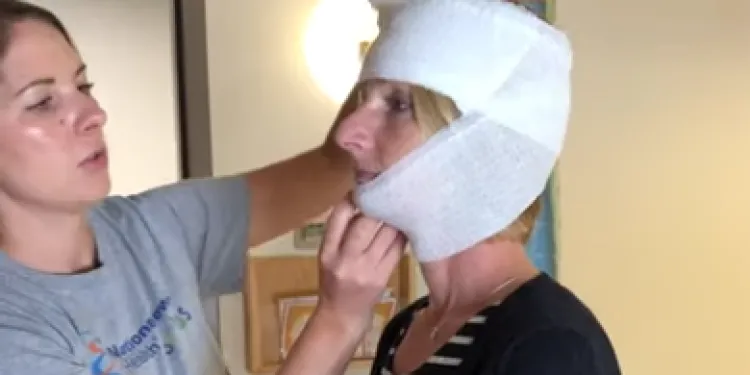
How to apply wet wrap bandaging to the head and face area.
Relevance: 86%
-
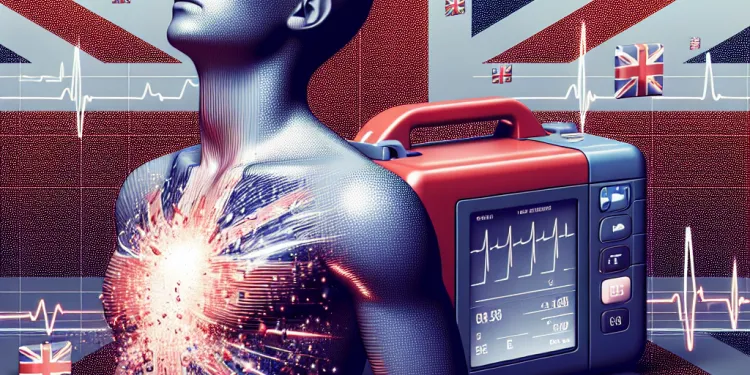
Can you use a defibrillator on a wet person?
Relevance: 43%
-

Can I use wet clothing to help stay cool?
Relevance: 42%
-
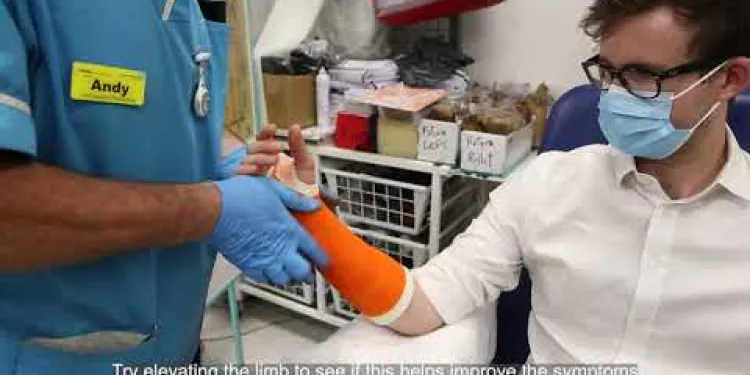
Fracture Clinic: Plaster Casts
Relevance: 21%
-

How can I cool down quickly if I start feeling overheated?
Relevance: 18%
-

What treatments are available for eczema?
Relevance: 18%
-

What are common signs of leaks in water infrastructure?
Relevance: 15%
-

Managing and treating your child's eczema
Relevance: 14%
-

How do I send books or magazines?
Relevance: 13%
-

How can I keep my kids cool during a heatwave?
Relevance: 13%
-
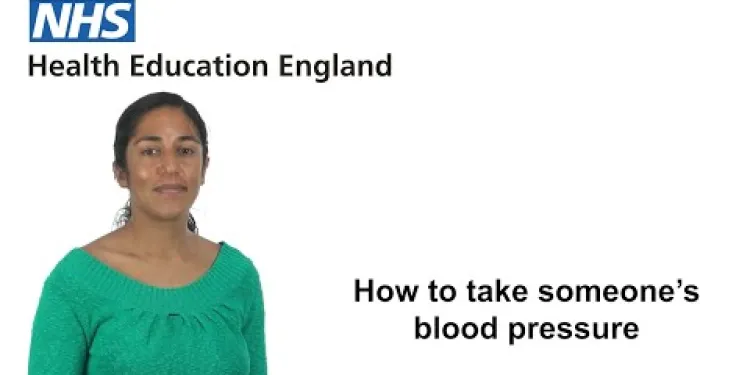
How to take someone's blood pressure
Relevance: 13%
-

How can I ensure pets are safe during a heatwave?
Relevance: 13%
-
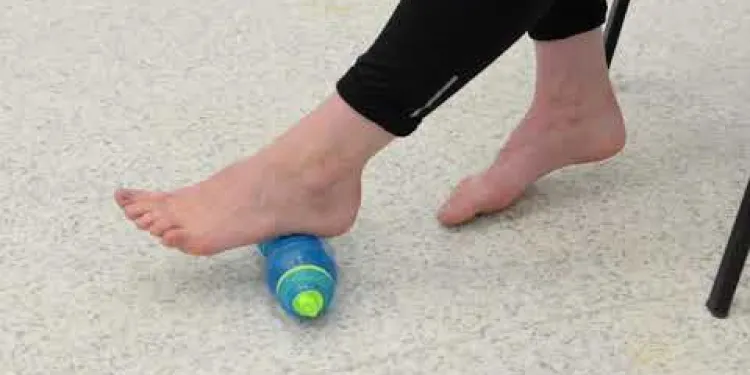
Plantar Fascia Cold Therapy
Relevance: 13%
-
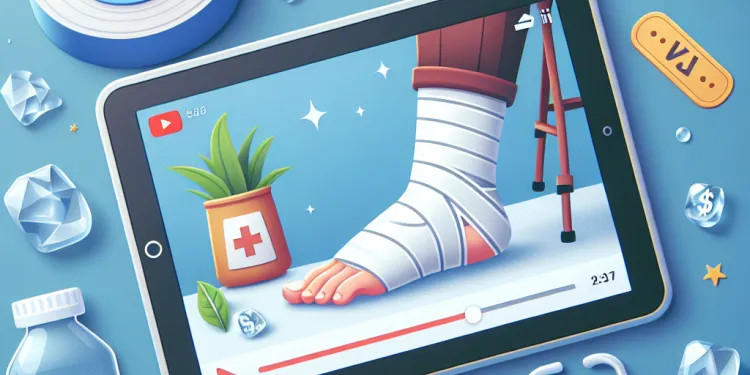
How to treat a sprained ankle
Relevance: 12%
-

Is it okay to use ice packs or cold showers to cool down?
Relevance: 11%
-

Where can nits be found?
Relevance: 11%
-

Eczema - Your child's appointment | Dermatology | Paediatrics
Relevance: 10%
-

Self-care for sprains and strains
Relevance: 10%
-
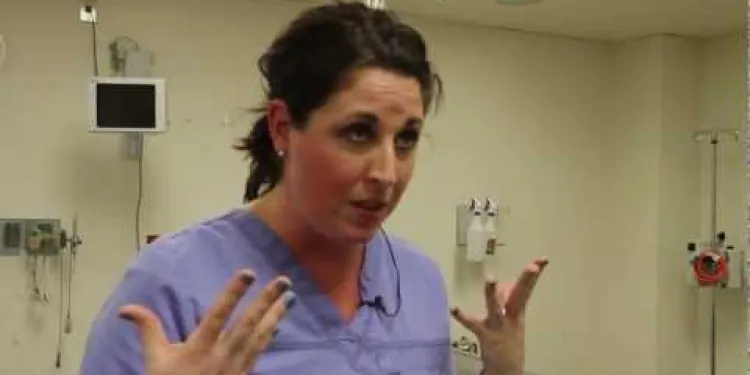
How to treat a scald burn
Relevance: 9%
-

Can weather conditions contribute to dangerous driving?
Relevance: 9%
-

How can individuals help reduce sewage pollution?
Relevance: 9%
-

Think Pharmacy: Sprains and Strains
Relevance: 9%
-
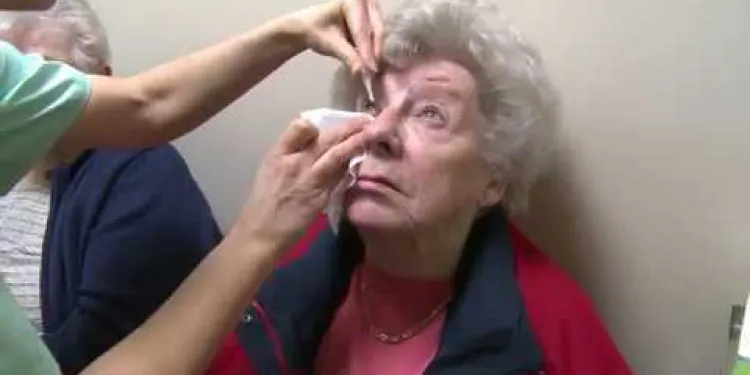
Eye Injections at Royal Bournemouth Hospital
Relevance: 9%
-

What should I do if I experience side effects from a vaccine?
Relevance: 9%
-
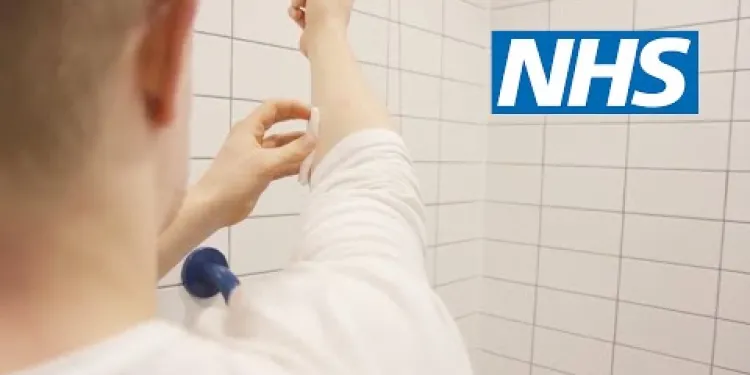
How to treat an insect bite or sting | NHS
Relevance: 8%
-

Does water reflect UV rays, increasing the risk of sunburn?
Relevance: 8%
-

Can you shower with a stoma bag?
Relevance: 7%
-

Can cold weather cause a cold?
Relevance: 7%
-

How to treat a cold | NHS
Relevance: 7%
-

Are there mosquitoes in the United Kingdom?
Relevance: 7%
-

Can I modify a car I'm leasing or financing?
Relevance: 7%
-

Is a stoma bag visible under clothes?
Relevance: 7%
-

What are some signs of heat exhaustion?
Relevance: 7%
-
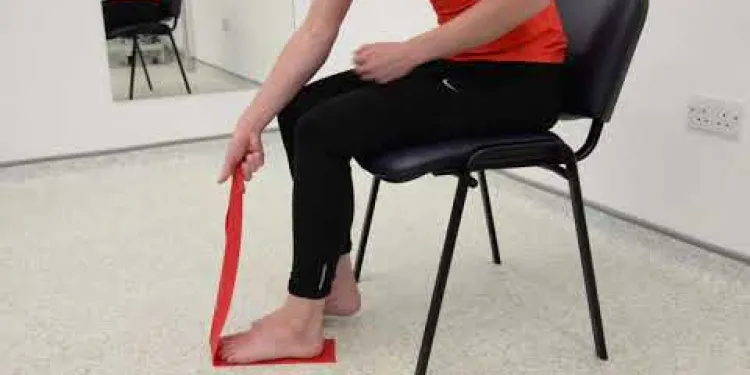
Plantar Fascia Intrinsic Theraband Strengthening Exercise
Relevance: 6%
-

Podiatrist Fungal feet - fungal infection of skin and nails and how to prevent fungal infection in feet
Relevance: 6%
-

What is an AED?
Relevance: 6%
-
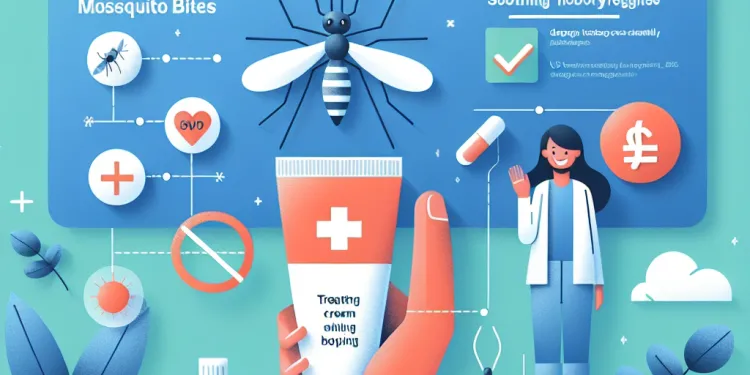
How can I treat mosquito bites?
Relevance: 6%
-

Is it necessary to complete a final tax return for the deceased?
Relevance: 6%
-

Bronchiolitis and chest infections in young children - Prof Steve Turner
Relevance: 6%
The benefits of Wet Wraps for Eczema Sufferers of all ages.
Applying wet wraps is a therapeutic and effective technique for managing eczema, offering relief from symptoms like itching, redness, and inflammation. This process involves carefully wrapping affected areas with damp fabric, creating a controlled environment that promotes skin hydration and healing. Here's a more detailed guide on how to apply wet wraps for eczema sufferers:
- Gather Materials: Begin by collecting the necessary materials. You'll need soft, breathable fabric such as gauze or muslin, a prescribed moisturizer or medicated ointment, and warm water. Ensure that the fabric is clean and free from irritants.
- Moisturize the Skin: Start by applying a generous amount of the prescribed moisturizer or ointment to the affected areas. This step is crucial in hydrating the skin and creating a protective barrier. Use a product recommended by your dermatologist to address your specific skin needs.
- Prepare the Wet Wraps: Soak the fabric wraps in warm water. Wring out excess water, leaving the wraps damp but not dripping. You can add a small amount of colloidal oatmeal to the water, known for its soothing properties, but always consult your healthcare provider before adding any additional ingredients.
- Apply the Wet Wraps: Gently wrap the damp fabric around the moisturized skin. Be cautious not to wrap too tightly, as this may cause discomfort or restrict blood flow. Ensure that the wraps cover the entire affected area comprehensively.
- Add Dry Wraps (Optional): For enhanced effectiveness, you can layer the wet wraps with dry ones. This additional layer helps to maintain moisture and provides extra comfort. However, it's essential to consult with your healthcare provider before incorporating dry wraps into the routine.
- Set a Time Limit: Typically, wet wraps are left in place for about 2 hours or as advised by your dermatologist. During this time, it's advisable to engage in quiet, relaxing activities to maximize the treatment's benefits.
- Remove and Re-Moisturize: After the recommended time, carefully unwrap the fabric. Reapply the moisturizer to the skin to maintain hydration. This step is vital in preventing the skin from drying out after the wet wrap application.
- Regular Monitoring and Adjustments: Consistency is key, but it's crucial to monitor your skin's response. If any adverse reactions occur or if your eczema worsens, consult your healthcare provider for guidance. Wet wrap therapy can be adjusted based on individual needs and responses.
Always seek professional advice before starting any eczema treatment, and remember that wet wraps are just one component of a comprehensive eczema management plan. Regular communication with your healthcare provider ensures the most effective and personalized care for your eczema condition.
How to Apply Wet Wraps
Introduction to Wet Wraps
Wet wraps, a treatment primarily for eczema, are a soothing and effective way to manage flare-ups and keep the skin hydrated. In the UK, this method is widely recommended by dermatologists and healthcare professionals. Wet wrapping involves applying a damp layer of bandages or clothing over a moisturised area of the skin, followed by a dry layer to hold in the moisture.Materials Needed
To apply wet wraps, you will need the following materials:- A gentle, fragrance-free emollient or prescribed topical medication
- Clean, soft bandages or tubular garments (like Tubifast)
- Warm water
- A dry layer of clothing or bandages to cover the wet layer
Step-by-Step Application
1. Clean and Prep the Skin
Start by gently cleansing the affected skin using lukewarm water and a mild soap. Pat the skin dry with a soft towel, leaving it slightly damp to retain moisture.2. Apply the Emollient or Medication
Generously apply your chosen emollient or prescribed topical medication directly to the eczema-affected areas. Ensure even coverage, as the emollient creates a barrier that helps lock in moisture and protect the skin.3. Prepare the Wet Layer
Soak the bandages or tubular garments in warm water until they are thoroughly saturated. Wring out any excess water so that they are damp but not dripping.4. Apply the Wet Layer
Carefully wrap the damp bandages or garments around the moisturised skin. Ensure that the wet layer is snug but not too tight to cut off circulation. The moist environment helps to alleviate itching and promote healing.5. Apply the Dry Layer
Place a dry layer of clothing or bandages over the wet layer. This covering helps to keep the wet wraps in place and maintain the damp environment. For larger areas like the torso, you can use a dry onesie or pajamas.Duration and Frequency
To maximize effectiveness, wet wraps should typically be left in place for a few hours, or overnight if the comfort level is adequate. The frequency of application often starts with daily treatments during severe flare-ups and can be reduced as the skin condition improves. Always follow your healthcare provider’s specific recommendations.Considerations and Tips
- Wet wraps can be used on adults and children, but always consult a healthcare provider before starting treatment. - Ensure that the materials used are hypoallergenic and free of fragrances to avoid further irritation. - Never reuse bandages or garments without washing them first to prevent infection. - Monitoring the skin’s response is crucial. If any signs of infection (increased redness, warmth, or oozing) appear, discontinue use and consult a healthcare provider immediately.Conclusion
Wet wraps are an effective treatment for managing eczema and other skin conditions in the UK. By maintaining skin hydration and aiding the absorption of medications, this method provides relief from itching and promotes healing. Follow these careful steps to ensure effective and safe application, and always consult with your healthcare provider for tailored advice.How to Apply Wet Wraps
Introduction to Wet Wrap Therapy
Wet wrap therapy is an effective treatment used in the United Kingdom for conditions such as eczema and other skin irritations. It involves applying damp fabric wraps over emollients or medicated creams on the skin. This method helps hydrate the skin, reduce inflammation, and involve less itching by enhancing the absorption of topicals.
Preparing Materials
To apply wet wraps at home, gather the necessary materials. You will need clean cotton bandages or garments, warm water, a gentle emollient or prescribed topical cream, and a set of dry clothes. Ensure that all materials are clean to avoid introducing any infections.
Steps to Apply Wet Wraps
Step 1: Clean and Moisturise Your Skin
Start by gently cleaning the affected area with lukewarm water to remove any dirt. Immediately after, apply a thick layer of emollient or the prescribed topical treatment directly to the skin to lock in moisture.
Step 2: Dampen the Wraps
Moisten the cotton bandages or garments with warm water. Ensure they are damp but not dripping. The material should feel comfortably warm on the skin.
Step 3: Apply the Wet Wraps
Carefully wrap the damp material around the treated areas. Ensure that the wraps conform to the contours of the body and cover the area properly without being too tight.
Step 4: Cover with Dry Layer
Once the wet wraps are applied, cover them with a dry layer of clothing or bandage. This helps retain the moisture and enhances the treatment's effectiveness while maintaining body heat.
Conclusion and Additional Tips
Leave the wet wraps on for a few hours or overnight, as advised by your healthcare professional. Remember to monitor the skin for any adverse reactions or signs of infection. Wet wrap therapy can significantly ease discomfort and aid the healing process, making it a beneficial addition to your skincare routine in the UK.
How to Apply Wet Wraps
Wet wraps are a therapeutic technique used to manage and soothe irritated skin, particularly for conditions like eczema or dermatitis. This method involves wrapping the skin in wet bandages to hydrate and cool the inflamed areas, offering relief and facilitating healing. Here's a guide tailored for residents of the United Kingdom on how to apply wet wraps effectively.
Step 1: Prepare the Materials
Gather necessary materials, including a mild emollient or prescribed topical treatment, soft bandages or cotton garments, and warm water. In the UK, products such as Diprobase or E45 cream are popular choices available in pharmacies.
Step 2: Cleanse the Skin
Begin by gently cleansing the affected area using lukewarm water and a mild soap. Avoid using any harsh or perfumed soaps that might irritate sensitive skin further. Pat the skin dry with a soft towel, leaving it slightly damp for better absorption of the emollients.
Step 3: Apply the Topical Treatment
Generously apply the prescribed topical treatment or emollient to the affected area. Be sure to cover the entire surface without rubbing too hard. This layer acts as a protective barrier and aids in skin hydration.
Step 4: Wet the Bandages
Soak the bandages or cotton wraps in warm water, ensuring they are thoroughly wet but not dripping. Squeeze out any excess water to achieve the right level of moisture. The wraps should feel comfortable and not too cold when applied to the skin.
Step 5: Wrap the Skin
Carefully wrap the wet bandages around the affected areas. Ensure the wraps are snug but not so tight that they restrict circulation. Follow with a dry layer such as pyjamas or a soft blanket to provide extra warmth and comfort.
Step 6: Leave on for a Few Hours
Allow the wet wraps to stay on the skin for a minimum of 30 minutes up to a few hours, depending on the severity of the condition and guidance from a healthcare professional. During this time, try to remain relaxed and avoid any activities that may disturb the wraps.
Step 7: Remove and Moisturise
After removal, gently pat the skin dry if necessary and reapply moisturiser to retain the skin's hydration. Follow any additional skincare routines as prescribed by your physician or dermatologist.
By adhering to these steps, individuals in the United Kingdom can effectively use wet wraps to manage skin conditions. If symptoms persist or worsen, consulting a healthcare professional is recommended.
The Benefits of Wet Wraps for People with Eczema
Wet wraps can help people with eczema feel better. They can reduce itching, redness, and swelling. To use wet wraps, you cover the sore areas on your skin with wet cloths. This helps your skin stay moist and heal. Here is a simple guide on how to use wet wraps:
- Get Your Supplies: You will need soft cloths like gauze or muslin, your special skin cream or ointment, and warm water. Make sure the cloths are clean.
- Put Cream on Your Skin: First, put a big amount of cream or ointment on the sore areas. This helps keep your skin moist. Use the cream your doctor says is best for you.
- Make the Wet Wraps: Dip the cloths in warm water. Squeeze the water out so they are wet but not dripping. Some people add special oatmeal to the water to help soothe the skin, but ask your doctor first.
- Wrap Your Skin: Gently wrap the wet cloths around the sore areas on your skin. Do not wrap them too tight. Make sure the whole sore area is covered.
- Add a Dry Layer (Optional): You can put dry cloths over the wet ones. This helps keep the wet cloths in place and makes them work better. Ask your doctor if you should do this step.
- Leave Wraps On: Keep the wraps on for about 2 hours or as your doctor suggests. Do quiet activities while you wear them, like reading or drawing.
- Take Off Wraps and Add More Cream: After the time is up, take off the wraps. Put on more cream to keep your skin moist. This stops it from getting dry.
- Check Your Skin Regularly: Do this treatment as told by your doctor. Watch how your skin reacts. If your skin looks worse or you have bad reactions, talk to your doctor. They can help you make changes.
Always talk to a doctor before starting any new eczema treatments. Wet wraps are just one way to help with eczema. Your doctor can tell you the best plan for taking care of your skin.
How to Use Wet Wraps
What Are Wet Wraps?
Wet wraps help people with eczema feel better and keep their skin wet. Doctors in the UK often tell people to use wet wraps. This means putting a wet layer of bandages or clothes over skin with lotion, then putting a dry layer on top to keep it wet.Things You Need
You need these things to use wet wraps:- A gentle cream or medicine for the skin
- Clean, soft bandages or special clothes (like Tubifast)
- Warm water
- A dry layer of clothes or bandages to go over the wet layer
How to Put on Wet Wraps
1. Get the Skin Ready
Wash the skin gently with warm water and mild soap. Dry the skin with a soft towel, but leave it a little wet.2. Put on the Cream or Medicine
Put the cream or medicine on the eczema areas. Make sure it covers all the spots. This helps keep the skin wet and safe.3. Get the Wet Layer Ready
Soak the bandages or clothes in warm water. Squeeze out extra water so they are wet but not dripping.4. Put on the Wet Layer
Wrap the wet bandages or clothes around the skin with cream. Make sure it's snug but not too tight. The wetness can help stop itching and heal the skin.5. Put on the Dry Layer
Place dry clothes or bandages over the wet layer. This keeps the wet layer in place. If you are wrapping a large area, use a dry onesie or pajamas.How Long and How Often
Leave wet wraps on for a few hours or all night if comfortable. Start with daily wraps during bad flare-ups. Do it less often as the skin gets better. Always listen to your doctor’s advice.Things to Remember
- Wet wraps are for adults and kids. Always ask a doctor before starting. - Use materials that do not cause allergies or have smells. - Wash bandages or clothes after each use to stay clean. - Watch the skin closely. If it gets more red, warm, or starts oozing, stop using wraps and see a doctor.Conclusion
Wet wraps help treat eczema and keep the skin healthy. They keep skin wet and help medicine work. Follow these steps to use wet wraps safely. Always ask your doctor if you have questions.How to Put On Wet Wraps
What Are Wet Wraps?
Wet wraps are a way to help your skin when it feels itchy or dry. People in the UK use wet wraps if they have eczema or sore skin. This is how it works: first, you spread a special cream on your skin, then you put damp cloths on top. The damp cloths help your skin feel better and stop itching.
What You Need
To use wet wraps, you need a few things. Get some clean cotton bandages or clothes. You'll also need warm water and a gentle cream for your skin. Make sure everything is clean so you don't get germs on your skin.
How to Put On Wet Wraps
Step 1: Clean and Add Cream to Your Skin
First, wash your skin with warm water to clean it. Then, put a lot of cream on your skin right away. This will keep your skin wet and stop it from drying out.
Step 2: Get the Wraps Wet
Make the cotton bandages or clothes wet with warm water. They should be damp, not dripping. They should feel warm and nice on your skin.
Step 3: Put On the Wet Wraps
Wrap the damp cloths around the part of your skin where you put the cream. Make sure the cloths fit nicely and are not too tight.
Step 4: Add a Dry Layer
After you have put on the wet wraps, add a dry layer over them. This can be dry clothes or bandages. The dry layer helps keep the wet cloths warm and makes the treatment work better.
Finishing Up and Extra Tips
Leave the wet wraps on for several hours or all night, if your doctor says it's okay. Always check your skin to make sure it looks good and not sore. Wet wraps can help your skin feel better and heal faster.
How to Apply Wet Wraps
Wet wraps are a way to help skin that is itchy and sore. You might need them if you have problems like eczema. Wet wraps use wet bandages to make the skin feel better and heal it. Here is a simple guide on how to use wet wraps if you live in the UK.
Step 1: Gather What You Need
You will need a soft cream or treatment from the doctor, soft bandages or cotton clothes, and warm water. In the UK, you can buy creams like Diprobase or E45 at the pharmacy.
Step 2: Clean the Skin
Gently wash the sore area with warm water and mild soap. Do not use soaps with strong smells as they can hurt sensitive skin. Pat the skin with a soft towel to keep it a little wet so creams work better.
Step 3: Put on the Cream
Cover the sore area well with the cream or treatment. Do not rub too hard. This will help keep skin safe and moist.
Step 4: Wet the Bandages
Wet the bandages or cotton clothes in warm water. Make sure they are not dripping. Squeeze extra water out. The bandages should feel nice and warm on the skin.
Step 5: Wrap the Skin
Put the wet bandages around the sore parts of your skin. Do not wrap them too tight. You can add a dry layer like pyjamas over the top to stay warm.
Step 6: Leave On for a While
Keep the wraps on for at least 30 minutes or longer if needed. A doctor can tell you how long. Relax and do not move too much while the wraps are on.
Step 7: Take Off the Bandages and Moisturise
After you take off the bandages, dry the skin gently and put more moisturiser on. Follow any skincare advice from your doctor.
These steps can help people in the UK use wet wraps to care for their skin. If the skin does not get better, see a doctor for help.
Frequently Asked Questions
What are wet wraps?
Wet wraps are a treatment method for eczema or extremely dry skin where moist bandages or cloths are applied to the skin to help hydrate and soothe affected areas.
When should I apply wet wraps?
Wet wraps are typically applied after a bath or shower, when the skin has been gently patted dry, to help lock in moisture and reduce itching and inflammation.
What materials do I need for wet wraps?
You'll need a moisturising cream or ointment, clean warm water, and gauze or cotton bandages. Some people also use tubular elastic bandages or cotton pyjamas as an outer layer.
How do I prepare wet wraps?
Soak the bandages or cloths in warm water, squeeze out excess water until they are damp but not dripping, and apply them over a layer of moisturiser on the skin.
Are wet wraps suitable for all ages?
Wet wraps can be used on both children and adults, but it is advisable to consult with a healthcare professional, especially for infants or if you have concerns.
How long can I leave wet wraps on?
Wet wraps are typically left on for several hours or overnight. The duration may vary based on medical advice and individual needs.
Can I reuse the bandages for wet wraps?
Bandages used for wet wraps should be washed and properly dried between each use to prevent bacterial growth. Always use clean materials.
What are the benefits of using wet wraps?
Wet wraps help to soothe the skin, reduce itching and inflammation, and enhance the effectiveness of topical treatments by allowing better absorption.
Do wet wraps need to be very tight?
No, wet wraps should be snug but not too tight, to avoid restricting blood circulation.
Can I apply wet wraps on broken skin?
Wet wraps can usually be applied to broken skin, but you should consult with a healthcare provider to ensure it's appropriate for your condition.
Are there any side effects to using wet wraps?
Side effects are uncommon but may include skin maceration or infection if the skin is kept too wet for too long. It's essential to follow proper guidelines.
Should I apply medication before or after wet wraps?
Medication, like topical steroids, is generally applied before wet wrapping, on top of the moisturiser, but follow your doctor’s specific instructions.
Can I use any moisturiser with wet wraps?
Use a thick, fragrance-free moisturiser or emollient that is suitable for sensitive skin and approved by your healthcare provider.
How often should I apply wet wraps to manage eczema?
The frequency of wet wrap application depends on the severity of your eczema and should be based on medical advice. Often they are used during flare-ups.
Where can I learn more about wet wrap therapy?
You can learn more about wet wrap therapy from your dermatologist, healthcare provider, or reputable health websites such as NHS.uk.
What are wet wraps?
Wet wraps are special cloths. You use them to help your skin feel better. They are good for itchy and sore skin.
To use wet wraps, you do these steps:
- First, put cream on your skin.
- Next, put the wet cloth on your skin. It should be damp, not dripping wet.
- Then, put a dry cloth on top.
Wet wraps help keep your skin soft and stop it from itching. It is a good idea to talk to a doctor or nurse before using wet wraps.
If you find reading hard, you can ask someone to read this to you. You can also use an app that reads words out loud.
Wet wraps help if you have very dry skin or eczema. You use wet cloths or bandages on your skin to make it feel better and add moisture.
When do I use wet wraps?
Use wet wraps when your skin feels very itchy or sore.
Ask a grown-up or a doctor if you are not sure.
They can help make your skin feel better.
Wet wraps are special bandages you put on after a bath or shower. First, gently pat your skin dry. Wet wraps help keep your skin moist and stop it from itching and getting red.
What things do I need for wet wraps?
You need a cream or ointment that keeps your skin wet. You also need clean warm water and bandages made from gauze or cotton. Some people use stretchy bandages or cotton pyjamas over the top.
How do I prepare wet wraps?
Here is how you can get wet wraps ready:
- Get clean bandages or cloth.
- Soak them in warm water.
- Gently squeeze out extra water so they are not dripping wet.
- Wrap the wet bandages around the area you want.
- Cover with dry bandages or clothes to keep them in place.
- Ask a grown-up to help if needed.
You can use pictures or videos to help you understand. A grown-up or doctor can also show you how.
First, get some bandages or cloths. Put them in warm water. Then, squeeze out the extra water. They should be wet, but not dripping. Next, put some skin cream on your skin. Finally, place the wet bandages or cloths on top of the cream on your skin.
Can wet wraps be used for everyone?
Wet wraps can help with skin problems. But, they might not be right for everyone. Here’s what to know:
- Babies: Talk to a doctor first.
- Children: Ask a doctor if wet wraps are a good idea.
- Adults: Check with a doctor too.
It's always good to ask a doctor before trying something new.
Tools that can help:
- Ask someone to read aloud with you.
- Use pictures to understand better.
You can use wet wraps on kids and grown-ups. But, it's a good idea to talk to a doctor first. This is extra important for babies or if you are worried about anything.
How long can I leave wet wraps on?
You can keep wet wraps on for a short time. About 2 hours is good. If they dry out, you can take them off.
Use a clock or a timer to help you remember when to take the wet wraps off.
Wet wraps are special bandages that you wear for a few hours or while you sleep. How long you wear them can change based on what your doctor says or what you need.
Can I use the bandages again for wet wraps?
Wash and dry bandages after each use. This stops germs from growing. Always use clean bandages.
Why are wet wraps good to use?
Wet wraps can help make your skin feel better. They help stop itching and swelling. Wet wraps also help skin medicine work better because the skin can soak it in more easily.
Do wet wraps need to be very tight?
Do wet wraps need to be really tight?
Wet wraps are not clothes.
They help with skin problems like eczema.
You do not need to make wet wraps very tight.
They should fit snugly but not too tight.
If wrap is too tight, it can hurt.
You can ask an adult to help you.
You can also ask a nurse or doctor.
They can show you how to do it right.
Wet wraps should fit snug, not too tight. If they are too tight, they can stop blood from flowing well.
Can I use wet wraps on cut or broken skin?
Wet wraps are good for itchy or dry skin. But don't use them on cuts, scrapes, or broken skin. This can hurt or cause problems.
If you have a cut or scrape, tell an adult. They can help clean it and put on a plaster if needed.
Use nice, soft bandages if skin is hurt. Ask for help when unsure.
You can usually use wet wraps on broken skin. But, you should talk to a doctor or nurse first. They can tell you if it is okay for you.
Can wet wraps cause any problems?
It's rare to have problems, but sometimes your skin can get too soft or sick if it stays wet for a long time. Make sure you follow the rules to keep your skin healthy.
When should I put on medicine: before or after wet wraps?
If you are using wet wraps, you might wonder when to put on the medicine. Here is a simple guide:
- Step 1: Put the medicine on the skin first.
- Step 2: Then, put on the wet wraps.
Support tools: You can use a timer to remember how long to keep the wraps on. Ask an adult to help if you need it.
First, put medicine like ointment or cream on your skin. This could be something like a steroid cream your doctor gave you. Then, put the moisturiser on your skin. After the moisturiser, do the wet wrapping. But always listen to what your doctor tells you to do.
Can I use any cream with wet wraps?
A wet wrap is when you use a wet cloth on your skin after you put cream on. This helps the skin a lot.
You can use some creams with wet wraps, but not all. It is best to ask a doctor which cream is good for this. You can also use soft cotton cloths for the wraps. Sometimes, your skin might need special care, and a doctor can help with that too.
Recognizing images can be easier for some people, so if you can, show a picture of how to use wet wraps. This can help understand what to do.
Use a thick cream without any strong smells. Make sure it is safe for sensitive skin. Ask your doctor or nurse if it is okay to use.
How often should I use wet wraps to help with eczema?
Eczema makes your skin itchy and sore. Wet wraps are special cloths that can help your skin feel better. Here is how to use them:
- Ask a grown-up or a doctor how often to use wet wraps. Usually, you can use them once or twice a day.
- Put on wet wraps after you use your eczema cream.
- Use soft, damp cloths to wrap the itchy areas on your skin.
- Then, cover them with dry cloths.
- Take the wraps off after a while, like one or two hours, or as your doctor says.
If you need help remembering, you can make a chart or use a timer or an app. Always talk to someone who helps you with your eczema care.
How often you use wet wraps depends on how bad your eczema is. A doctor can tell you best. Wet wraps are often used when eczema gets worse.
Where can I find out more about wet wrap therapy?
You can learn more about wet wrap therapy in these ways:
- Ask a doctor or nurse.
- Visit a health clinic.
- Read books for kids about skin care.
- Watch videos made for kids online.
Here are some tools to help you:
- Use picture books.
- Try audio books if you like listening.
- Use apps that help you read out loud.
You can find out more about wet wrap therapy by asking your skin doctor or healthcare provider. You can also look on trusted health websites like NHS.uk.
Useful Links
- Ergsy carfully checks the information in the videos we provide here.
- Videos shown by Youtube after a video has completed, have NOT been reviewed by ERGSY.
- To view, click the arrow in centre of video.
- Most of the videos you find here will have subtitles and/or closed captions available.
- You may need to turn these on, and choose your preferred language.
- Go to the video you'd like to watch.
- If closed captions (CC) are available, settings will be visible on the bottom right of the video player.
- To turn on Captions, click settings .
- To turn off Captions, click settings again.
More Items From Ergsy search
-

How to apply wet wraps
Relevance: 100%
-

How to apply wet wrap bandaging to the head and face area.
Relevance: 86%
-

Can you use a defibrillator on a wet person?
Relevance: 43%
-

Can I use wet clothing to help stay cool?
Relevance: 42%
-

Fracture Clinic: Plaster Casts
Relevance: 21%
-

How can I cool down quickly if I start feeling overheated?
Relevance: 18%
-

What treatments are available for eczema?
Relevance: 18%
-

What are common signs of leaks in water infrastructure?
Relevance: 15%
-

Managing and treating your child's eczema
Relevance: 14%
-

How do I send books or magazines?
Relevance: 13%
-

How can I keep my kids cool during a heatwave?
Relevance: 13%
-

How to take someone's blood pressure
Relevance: 13%
-

How can I ensure pets are safe during a heatwave?
Relevance: 13%
-

Plantar Fascia Cold Therapy
Relevance: 13%
-

How to treat a sprained ankle
Relevance: 12%
-

Is it okay to use ice packs or cold showers to cool down?
Relevance: 11%
-

Where can nits be found?
Relevance: 11%
-

Eczema - Your child's appointment | Dermatology | Paediatrics
Relevance: 10%
-

Self-care for sprains and strains
Relevance: 10%
-

How to treat a scald burn
Relevance: 9%
-

Can weather conditions contribute to dangerous driving?
Relevance: 9%
-

How can individuals help reduce sewage pollution?
Relevance: 9%
-

Think Pharmacy: Sprains and Strains
Relevance: 9%
-

Eye Injections at Royal Bournemouth Hospital
Relevance: 9%
-

What should I do if I experience side effects from a vaccine?
Relevance: 9%
-

How to treat an insect bite or sting | NHS
Relevance: 8%
-

Does water reflect UV rays, increasing the risk of sunburn?
Relevance: 8%
-

Can you shower with a stoma bag?
Relevance: 7%
-

Can cold weather cause a cold?
Relevance: 7%
-

How to treat a cold | NHS
Relevance: 7%
-

Are there mosquitoes in the United Kingdom?
Relevance: 7%
-

Can I modify a car I'm leasing or financing?
Relevance: 7%
-

Is a stoma bag visible under clothes?
Relevance: 7%
-

What are some signs of heat exhaustion?
Relevance: 7%
-

Plantar Fascia Intrinsic Theraband Strengthening Exercise
Relevance: 6%
-

Podiatrist Fungal feet - fungal infection of skin and nails and how to prevent fungal infection in feet
Relevance: 6%
-

What is an AED?
Relevance: 6%
-

How can I treat mosquito bites?
Relevance: 6%
-

Is it necessary to complete a final tax return for the deceased?
Relevance: 6%
-

Bronchiolitis and chest infections in young children - Prof Steve Turner
Relevance: 6%


